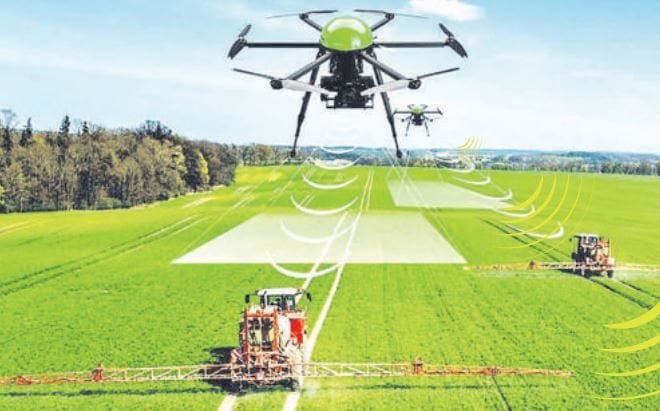Thinking of a future with no farmers in the farms? One where farmers can monitor their crops or the movement of their animals without the need of going into the farm. With an ever-increasing population that will need to be fed, agriculture is slowly undergoing a radical transformation thanks to advancement in Artificial Intelligence (AI) technology.
Innovative new solutions, some of them driven by robotics and AI are reordering what we know about agriculture, making it less labour intensive, and more efficient.
Dr Lawrence Nderu, a lecturer at Kenya’s Jomo Kenyatta University of Agriculture and Technology’s (JKUAT) School of Computing and Technology envisions a situation where challenges in the way we farm would force the adoption of new technology.
“We would be forced to adopt considering that climate change is a reality, the rain has become undependable in most areas, there are pests, human-wildlife conflict and these will force us to adopt new ways of thinking and doing things. These challenges will push technology of that nature to be adopted,” he said.
AI is making way
While AI is still fairly recent technology, it has already made its way to mobile technology. Phone cameras can now recognise the image they are taking and adjust the camera settings accordingly. AI systems are finding ever-wider application across enterprises such as health and even agriculture and has the potential to solve some of the most challenges farmers in Kenya are grappling with such as climate change, an infestation of pests and weeds and reduced yields.
In parts of Kenya and Mozambique, for instance, extension workers have been using low-cost drones, to help farmers detect pests and diseases on their crops and make informed decisions for improving crop water efficiency and yields.
The Third Eye project was initiated in Marimba, Githongo and Kibirichia areas in Meru County in Kenya in 2017 by Netherlands Development Agency (SNV) in partnership with Jomo Kenyatta University of Agriculture Technology (JKUAT). It uses RGB cameras and near-infrared cameras mounted on the drones to surveil and diagnose the plants for pests and diseases, water stress and nutrient deficiencies.
Extension workers have been trained to operate the drones and capture, analyse and present findings to the farmers most of whom, without the technology, would be unable to determine that their plants could be nutritionally deficient, water-stressed, or under attack by crop pests. It detects these subtle changes in the crops before they are discernible to the human eye, thus enabling early intervention and saving farmers from losses.
“This drone is mounted with a sensor that uses the same wavelength, the same science as a satellite so literally it is like we are capturing satellite data at greater detail,” Prof Bancy Mati, director and founder Water Research and Resource Centre at JKUAT said.
The direction of agri-tech
It is interventions such as the Third Eye project that are shaping the direction that agriculture will take. Had such technology been readily available, Dr Nderu said, the Ministry of Agriculture would have been able to save farmers from the losses incurred by an Army Worm invasion last year.
“Small scale farmers were affected by armyworms because of late detection if there was a way that we could be able to monitor and then map out the affected areas,” he said.
In a 2018 report by the African Union High-Level Panel on Emerging Technologies dubbed Drones on the Horizon: Transforming Africa’s Agriculture, the AU says technology has the potential to help farmers maximise their resources and provide rich, timely and granular or detailed data.
“Harnessing precision agriculture with the use of drones in the context of large- to medium-scale farms, as well as cooperative endeavours, is likely to result in increased agricultural productivity and returns to investment and improved environmental sustainability,” the report says.
While the use of such technology is limited in small scale farms that make up the majority in Africa, other more developed countries such as the United States and the United Kingdom have gone further in using robotics and AI on the farm. Experts in the UK are testing cutting-edge technology like fitting cows with collars that control a robotic milking system.
The collars are implanted with transponders that can tell when a cow is ready for milking and connects with machines that do the milking automatically.
In the US, Artificial intelligence experts at Carnegie Mellon University are teaming up with agricultural leaders and plant scientists to improve plant breeding and crop management practices using AI technology. The team has developed a ground robot mounted with a camera and a laser scanner that can predict the expected yield of a plant.
According to Dr Nderu, similar technology is being implemented at the university. “Based on the image that you get, you could be able to identify the amount of yield of maize plants,” he said. Yet there is a gap between what exists in the research institutions and what is available to the consumer. The cost of technology such as drones has made it unavailable outside of the government and research bodies.
“It is costly to buy the drones, the biggest challenge will be funding internally from the government efforts and research institutions. But we have realised that external partners are interested and they see potential in that,” he said.






























